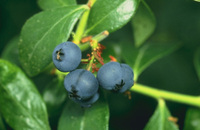Fat and Cancer

It is not every day that a medical story hits the front page of USA Today, but today one has, and for a very good reason.
The World Cancer Research Fund (WCRF) has just published a report that we have been eagerly awaiting for several years. It is the most comprehensive analysis ever published on the link between cancer and diet, weight and physical activity. Researches at nine academic institutions across the world looked for every relevant study published since records began in the 1960s. They initially found half a million, and in the end 7,000 of them were judged to be the most relevant and robust for inclusion in the report.
It includes 10 recommendations from a panel of 21 world-renowned scientists that represent the most definitive and authoritative advice that has ever been available on how the general public can prevent cancer. UNICEF and the World Health Organization were among the official observers of the report’s process.
A key finding is that maintaining a healthy weight (a BMI of 20-25) is one of the most important things you can do to prevent cancer. The number of types of cancer where there is “convincing” evidence that body fat is a cause has risen from one to six since the last WCRF report was published in 1997, including colorectal cancer and post-menopausal breast cancer.
Prof Sir Michael Marmot, who was Chair of the Panel, said that,
“We are recommending that people aim to be as lean as possible within the healthy range, and that they avoid weight gain throughout adulthood.
“This might sound difficult, but this is what the science is telling us more clearly than ever before. The fact is that putting on weight can increase your cancer risk, even if you are still within the healthy range.
“So the best advice for cancer prevention is to avoid weight gain, and if you are already overweight then you should aim to lose weight.”
Other findings in the report include:
There is “convincing” evidence that processed meats, including ham and bacon, increase the risk of colorectal cancer. People who consume them are advised to do so sparingly.
The evidence that red meat is a cause of colorectal cancer is stronger than ever before. People should not eat any more than 18 ounces (500g) of red meat a week.
This figure is for cooked meat, and is the equivalent of between 15-30 ounces (700-750g) of non-cooked meat.
Here is something that is almost a first, at least for a cancer report. It has made a breastfeeding recommendation: mothers are advised to breastfeed exclusively for six months and to continue with complementary breastfeeding after that. This is because of “convincing” evidence that breastfeeding protects the mother against breast cancer and “probable” evidence that it protects the child against obesity later in life.
Dietary supplements are not recommended for cancer prevention. The evidence that alcohol is a cause of cancer is stronger now than ever before.
Professor Martin Wiseman, Project Director of the Report, said:
“This report is a real milestone in the fight against cancer, because its recommendations represent the most definitive advice on preventing cancer that has ever been available anywhere in the world.
“When individual studies are published, it is impossible for the public to put them into context and know how seriously they should be taking the findings. But the great thing about this report is that it does this job for them.
“If people follow our recommendations, they can be confident they are following the best advice possible based on all the scientific research done up to this point. These recommendations are not based on one study but are based on 7,000.”
In the United Kingdom, plans are afoot to establish a Cancer Reform Strategy. Professor Mike Richards, the British Government’s Clinical Director for Cancer, had this to say:
“The WCRF report is the most authoritative and exhaustive review done thus far on the prevention of cancer through food, nutrition and physical activity.
“For those of us wanting to lower our risk of developing cancer, the Report provides practical lifestyle recommendations. The Report also provides public health goals. Both will form an important element for the forthcoming Cancer Reform Strategy.”
These are the main recommendations:
- Limit red meat
- Limit alcohol
- Avoid bacon, ham, and other processed meats
- No sugary drinks
- No weight gain after 21
- Exercise every day
- Breastfeed children
Have you seen those infomercials where someone tells you that there is some conspiracy by shadowy people who don’t want you to know the truth about diet, exercise and cancer? Next time remember this research. If some expensive supplement or the juice of an exotic berry from the Himalayas could really reduce the risk of cancer, these studies should have noticed something by now.
He That Enjoys His Portion

Having grown up at a time and in a culture where it was expected that everyone would finish every morsel of food on his plate, it was quite a shock to come to the United States and to be confronted by mountains of food. During my first few months I dutifully consumed everything on my plate and soon noticed the effect on my waistline. But it brought home to me the power of social and cultural factors in eating.
Though each of us is responsible for how much we eat, research suggests that cultural and social norms can make it hard for us to choose appropriate portion sizes. The November 2007 issue of Harvard Women’s Health Watch has published an interesting article about the way in which misperceptions about portions can affect calorie intake.
A first point is that many of us tend to treat portions as equivalent to nutritional servings. A serving is a specific quantity of food designated on the basis of nutritional need. However, a portion–the amount you actually get on your plate, in the package, or at the counter–is often much larger. Many of us do not always read the Nutrition Facts label, and may find ourselves eating two or three servings’ worth. Studies suggest that we might be satisfied with smaller portions if larger ones were not so easily available. Other research has shown that the more plentiful the food, the more we eat. I know form my own experience that both of those are true.
The Harvard Women’s Health Watch offers some advice for “keeping portions in proportion:”
- Train your eye: Measure out servings – not portions – of the food you commonly eat so you know what a single serving looks like
- Change your tableware: Use a smaller bowl or a mug for cereal and a smaller plate at dinner
- Control portions at home: To discourage second helpings, serve food in the kitchen and take it to the table on plates
- Eat at regular intervals throughout the day: Do not wait until you are hungry, since you are then more likely to overindulge at the next meal
- Control portions while eating out: Avoid buffets and salad bars. Instead of a dinner, order a low-fat appetizer and a large salad with dressing on the side
These are all simple and straightforward pieces of advice that will be familiar to anyone working in the weight and metabolism field.
On another occasion I shall give you a few more of my own tips, including “Perimeter shopping”
Chocolate, Comfort Foods and Depression

Most people have done a bit of comfort eating from time to time: candies and chocolates are usually the favorites. That’s not a coincidence. Not only do they taste good, but chocolate also contains chemicals that may improve mood, and sugar can have an indirect impact on the uptake of specific amino acids into the brain, where they go on to form the chemical neurotransmitters involved in inter-cellular communication and learning.
On the more serious side, some types of mood disorders, particularly seasonal affective disorder, premenstrual syndrome and the so-called “atypical depression” are often associated with quite sever cravings for chocolate.
So I was very interested to see a paper from colleagues in Australia in this month’s issue of the British Journal of Psychiatry.
Gordon Parker and Joanna Crawford examined links between chocolate craving in people who are depressed and both personality style and atypical depressive symptoms, with a web-based questionnaire completed by nearly 3000 individuals reporting clinical depression.
People accessing a mood disorder consumer information website (http://www.blackdoginstitute.org.au) were invited to participate in an online survey of lifetime treatments for a depressive episode, together with some interesting evaluation tools.
Half of the respondents said that they craved chocolate, and the number was slightly higher in women. They said that they felt that chocolate helped with depression, anxiety and irritability. The ones who said that chocolate helped were more likely to score higher on a “neuroticism” scale, particularly irritability and rejection sensitivity.
Five years ago the same team found that atypical depression was associated with a personality that was especially sensitive to rejection, and also tended to be linked with several symptoms – including food cravings – that tie in with behaviors aimed to try and make us feel better and to maintain internal balance.
The results suggest that people with certain personality styles derive personal benefit from comfort eating. Some research has linked carbohydrate craving to the opioid system in the brain, and it is possible that munching on chocolate may be an example of genuine self-medication. People eat to chocolate to calm down their ability to feel emotional distress.
The trouble is, of course, that although chocolate is yummy and may even be therapeutic, too much can be a bad thing. Weight problems are common in people with chronic depression, especially the “atypical” type.
“Chocolate causes certain endocrine glands to secrete hormones that affect your feelings and behavior by making you happy. Therefore, it counteracts depression, in turn reducing the stress of depression. Your stress-free life helps you maintain a youthful disposition, both physically and mentally. So, eat lots of chocolate!”
–Elaine Sherman (American Culinary Expert, Teacher and Writer, 1938-2001)
“Look, there’s no metaphysics on earth like chocolates.”
–Fernando Pessoa (Portuguese Poet, 1888-1935)
Taking Action on Food Additives and Hyperactivity

Regular readers will remember my recent article concerning food additives and hyperactivity in children.
I have just read that he British Food Standards Agency (FSA) has been accused by campaigners of “chickening out” of banning additives linked to hyperactivity in children even though they funded the research that was published in the Lancet.
After the research was published, the FSA issued updated advice that eliminating the artificial colorings from the diet might have some beneficial effects in hyperactive children.
But critics said it did not go far enough and several environmental and children’s campaign groups, including the National Union of Teachers, called on the watchdog to extend that advice to all children since the additives posed a threat to psychological health.
The FSA responded by saying that the evidence was not strong enough to justify a ban and it would wait for the European Food Safety Authority (EFSA) to make a decision on use of additives in food.
EFSA says that it is considering the research as a matter of urgency and will be making an initial response within the next month.
We shall see what they have to say.
These were the main additives incriminated in the Lancet study:
Sunset yellow (E110) – Coloring found in some drinks
Carmoisine (E122) – Red coloring in jelly
Tartrazine (E102) – New coloring in some frozen and carbonated drinks
Ponceau 4R (E124) – Red coloring
Sodium benzoate (E211) – Preservative
Quinoline yellow (E104) – Food coloring
Allura red AC (E129) – Orange / red food dye
Food Additives, Food Colorings and Hyperactivity

Regular readers will know that I am very interested in the impact of food and food additives on cognition and behavior. Unfortunately it is a field that has generated more heat than light, with some patients associations and commercial organizations providing rather unbalanced assessments about the whole issue and how best to deal with it.
What we do on this website is to provide you with information that has a solid foundation. A good example is a new study published this week in the Lancet by a team of researchers from Southampton University in the United Kingdom. (The full article is available here).
An alarming number of foods contain artificial food color and additives (AFCAs), and there has been a great deal of concern about their potential impact not only on behavior, but also on the developing brain.
A study published three years ago examined the impact of specific mixtures of additives on hyperactivity in three-year-old children. It was an important piece of work, but the worry was that the study focused on parental rather than objective ratings of hyperactivity. Though parents are usually very good at observing their own children, most of us also have our own ideas about the things that may cause problems.
In this new study was sponsored by the British Food Standards Agency and the researchers looked at the effects of additives on changes in children’s behavior in a community-based, double-blinded, placebo-controlled, crossover trial.
The study involved 153 children aged 3, plus 144 children aged 8-9. They were given either a drink containing sodium benzoate plus one of two AFCA mixes, or a placebo drink. The two AFCA mixes contained:
- Mix A – included 20 mg of artificial food colorings (5 mg sunset yellow [E110], 2⋅5 mg carmoisinetartrazine [E102], and 5 mg ponceau 4R [E124, and 45 mg of sodium benzoate [E211]. (These were the same ingredients used in the previous study). [E122], 7⋅5 mg
- Mix B was designed to be what the average 3 year-old and 8-9 year old may be consuming today, and included 30 mg of artificial food colorings (7⋅5 mg sunset yellow, 7⋅5 mg carmoisine, 7⋅5 mg quinoline yellow [E110], and 7⋅5 mg allura red AC [E129]) and 45 mg of sodium benzoate.
The children’s behaviors were measured by a “global hyperactivity aggregate” (GHA) that is based on teachers’ and parents’ ratings. The older children also received a computerized test for attention.
The main findings were that:
- Mix A had a significant adverse effect on children in GHA for all the 3 year-olds, compared to the placebo.
- Mix B produced mixed results for 3 year-olds
- Both Mix A and Mix B had significant adverse effects on the 8-9 year olds, compared to the 8-9 year-olds on the placebo
- Children vary greatly in their levels of adverse effects from consuming AFCA
So this new research indicates that foods containing AFCAs may fuel hyperactive behaviors in children from early to middle childhood. An important point is that AFCAs may impact any child: the effect is not restricted to children who are already hyperactive or have attention-deficit/hyperactivity disorder (ADHD). The problem with hyperactivity is not so much the challenge of living with an overly energetic child, but rather the impact of hyperactivity on development and education, particularly on reading skills. The hyperactive child may not get the full benefit of a conventional education.
The researchers do not yet know whether their findings apply to older children. But they raise the question whether complete withdrawal of AFCAs from the food supply might decreases the overall rate of hyperactivity in the population.
However, they ask whether the general levels of hyperactivity in children in the general population might not go down significantly if AFCAs were withdrawn completely.
Whole Grains

Every day of the week I talk to people who say that they do not have time to eat a healthy diet or hunt for the right type of victuals, and so off they go to the health food store to buy some capsules.
How many advertisements have you seen for some capsule or powder that gives you all the nutrients and fiber that you need? But think about that for a moment: does that make sense? For millions of years our far-distant ancestors co-evolved with the plants and minerals around them. So does it make sense that we can pull out one dietary component and ignore the rest? Or that the berries of some plant growing thousands of miles from early humankind could contain some magic potion that will solve all of our problems? That would imply a rather capricious Universe that only wants you to find that essential something when you have the money and the wherewithal to find.
Back when the world was new – well, come to think, it was 1974 – I was impressed to see some early data that showed dramatic differences between the exquisitely balanced nutrient profile of an orange compared with commercially prepared orange juice. A few years later we even did a bit of research on the subject.
This topic has re-emerged with some new research that has received justified plaudits from experts at the American Institute for Cancer Research. The study has indicated that whole grain fiber rather than fiber from other food sources, is associated with lower risk of colorectal cancer.
The study was recently published in the American Journal of Clinical Nutrition and found that consumption of whole grains was associated with lower risk for colorectal cancer. The same study found no significant link between consumption of fiber from other food sources and colorectal cancer risk.
Researchers at the National Institutes of Health analyzed survey results from a huge prospective cohort study called the NIH-AARP Study involving more than 291,000 men and 197,000 women aged 50 to 71.
The scientists analyzed the participant’s intake of fiber from many different food sources, but only fiber from whole grains was associated with lower risk of colorectal cancer. In the study, those subjects who ate the most whole grains had a 20 percent lower risk of colorectal cancer than those who ate the least.
The observed protective effect of whole grain consumption was stronger for rectal cancer, with a 35 percent lower risk.
Experts have been following the conflicting and often contradictory findings on fiber and colorectal cancer for years.
Much of the previous research simply measured the participants’ total fiber intake. The trouble is that so much of the American diet is now made up of heavily processed grains in foods like pasta, cereals and breads, so “Fiber” is a really mixed bag. So it seemed that it might be helpful to distinguish between different food sources of fiber.
Let’s have a quick refresher course. All grains, from the familiar, like wheat, oats, rye, corn, to the less well known such as barley, bulgur, millet, quinoa start out as kernels. The bran is the outermost layer of the kernel, and that is where most of the fiber is found. The germ lies at the center of the kernel, and that is where most of the vitamins, minerals and fatty acids reside. In between the brain and the germ lies the endosperm, which contains a few vitamins and minerals and most of the starch.
Because the refining process removes the bran and germ, the main component of white bread and other products made from refined grains or white flour is starch. Whole grain products are darker and chewier than refined grain products is because all three layers of the kernel are ground together to make whole grain flour. This provides the kernel’s full complement of protein, fatty acids and a range of phytochemicals. Most importantly, perhaps, the fiber content of whole grains can be as much as four times that of refined grains.
The evidence connecting consumption of whole grains to reduced risk for cancer, cardiovascular disease, stroke and diabetes comes chiefly from population studies and laboratory work. Only recently have researchers begun to identify specific ways a diet high in whole grains promotes health.
In February 2006 a study also published in the American Journal of Clinical Nutrition found that a high whole-grain intake had a number of objective effects on physiological markers – homocysteine, plasma markers of glycemic control (fasting insulin, hemoglobin A1c, C-peptide, and leptin), lipids (total cholesterol, triglyceride, HDL cholesterol, and LDL cholesterol), and inflammation (C-reactive protein, fibrinogen, and interleukin 6 – that may be associated with both diabetes and cardiovascular disease almost all improved and none became worse.
The evidence for whole grains specifically lowering cancer risk is less strong. However, in 2003 European Prospective Investigation into Cancer (EPIC) prospectively examined the association between dietary fiber intake and incidence of colorectal cancer in 519,978 individuals aged 25 to 70 years, recruited from 10 European countries. The data showed that high consumption of fiber (from fruits, vegetables and whole grains) reduced risk for colon cancer by 25 percent.
Although most experts have been recommending “whole grain foods” for years, this new study finally proves that the fiber that we get from whole grains is different from the fiber we get from “starchy” foods like white bread and processed cereal, and that these differences are not only important for the vascular system and diabetes, but also for cancer risk.
Resistance Genes in the Food Supply

Your humble reported has been interested in nutrition since he was knee high to a puppy, and he has also been worried about the consequences of pesticides and other artificial chemicals getting into the food chain. He has also been worried about feeding all kinds of artificial potions to animals. Surely they would eventually turn up in humans, and we have little idea about all the things that they may do. It is also a worry that antibiotic resistance in humans could be passed on to bacteria in animals.
Some of these fears were born out at a conference – the 107th General Meeting of the American Society for Microbiology (ASM) – in Toronto this week.
A paper presented by Hua Wang of the Ohio State University suggests that the administration of antibiotics to animals could be contributing to the continuing rise of antibiotic-resistant infections in humans
The problem is a process known as horizontal gene transfer, in which bacteria that are in close proximity to each other can share genetic information, including genes that code for antibiotic resistance. Horizontal gene transfer between disease-causing bacteria has been known for years as an important avenue for the exchange of antibiotic-resistance genes among bacteria in hospitals. We all carry bacteria on and in our bodies. Some are beneficial, and help in things like digestion. Others are simply “passengers,” and we call these “commensal” bacteria.
Research has also already demonstrated that pathogenic bacteria have the ability to engage in horizontal gene transfer with the otherwise harmless bacteria that we all carry in our bodies. What concerns us is that these normally benign commensal bacteria have an enormous and diverse gene pool. That increases the likelihood of gene transfer. Some commensal bacteria exchange genetic information extremely quickly. That was helpful to the bacteria during evolution, but may be producing a boatload of problems for us today.
Dr Hua said:
“We have demonstrated not only that organisms carrying such intrinsic mechanisms have the potential to become an important reservoir for antibiotic resistance genes but, more importantly, that these intermediate organisms can disseminate antibiotic resistance genes in subsequent events much more effectively than the parental donor strain.”
“Once we no longer limit ourselves to food borne pathogens and look at commensal bacteria, we will find that the magnitude of antibiotic-resistant bacterial contamination in the food chain is tremendous.”
In a study published last year, she and her colleagues tested a range of ready-to-eat food samples that they purchased from several grocery chain stores. They included seafood, meats, dairy, deli items and fresh produce. With the exception of processed cheese and yogurt, antibiotic-resistance gene-carrying bacteria were found in many food samples that they examined.
The problem is not just confined to the food supply. Recent studies have shown antibiotic resistance genes in bacteria in the digestive tract of young infants. Since these children were still being breast- or formula-fed and had not yet eaten solid food, they must have acquired these genes somewhere other than the food supply. This suggests that resistance genes from the environment had somehow got into the infants.
Antibiotic resistance is a huge and ever-growing problem. For years now, many of us have worried about the over-prescribing of antibiotics when they are not needed. For example viruses cause the vast majority of sore throats, and few viruses respond to antibiotics. Yet patients often feel cheated if they do not leave a doctor’s office clutching a prescription. The result has been increasing numbers of resistant bacteria. When you really need an antibiotic, it may no longer be effective. Now we have another mechanism by which our actions have caused a problem that could quite literally be the death of us.
Non-pharmacological and Lifestyle Approaches to Attention-Deficit/Hyperactivity Disorder: 1. Diet

You can find some articles on Attention-Deficit/Hyperactivity Disorder (ADHD) here, and also some of the evidence that ADHD is a “real” illness and not just a label for socially unacceptable behavior. That being said, it is essential to take extra care when making the diagnosis. Mud sticks, and diagnostic mud sticks like glue. It can be hard to “unmake” a diagnosis.
As with any problem, the most effective way of helping it is to address the physical, psychological, social, subtle and spiritual aspects of the situation.
Medicines can definitely have a place in the management of ADHD, and the reason for treating ADHD is not so that people get better grades in school or do better at their jobs. It is to prevent the long term problems that may follow from inadequately treated ADHD.
There is a large and growing body of research on non-pharmacological approaches to treating ADHD. A literature search has turned up over two hundred papers, over half of which report some empirical research. Some of the research is summarized in a short paper aimed at health care professionals.
Research has shown that more than 50% of American families who receive care for ADHD in specialty clinics also use complementary or alternative medical (CAM) therapies, if you include things like modifying their diet or other aspects of their lifestyle. Despite that, only about 12% of families report their use of CAM to their clinician. Despite that low rate of families reporting the use of unorthodox therapies, a national survey of pediatricians showed that 92% of them had been asked by parents about complementary therapies for ADHD. The trouble is that many pediatricians have not been taught very much about the pros and cons of these approaches.
The most commonly used CAM therapies for ADHD are dietary changes (76%) and dietary supplements (> 59%). I have talked about food additives and one type of diet in the past. Now let’s look in a little more detail.
The 3 main dietary therapies for ADHD are:
- The Feingold diet,
- Sugar restriction, and
- Avoiding suspected allergens.
Sometimes these diets are used in combination.
The Feingold Diet
The Feingold diet is the most well known dietary intervention for ADHD. It aims to eliminate 3 groups of synthetic food additives and 1 class of synthetic sweeteners:
Synthetic colors (petroleum-based certified FD&C and D&C colors);
Synthetic flavors;
BHA, BHT and TBHQ ; and
The artificial sweeteners Aspartame, Neotame, and Alitame.
Some artificial colorings such as titanium dioxide are allowed.
During the initial weeks of the Feingold program, foods containing salicylates (such as apples, almonds, and grapes) are removed and are later reintroduced one at a time so that the child can be tested for tolerance. Most of the problematic salicylate-rich foods are common temperate-zone fruits, as well as a few vegetables, spices, and one tree nut.
During phase 1 of the Feingold diet, foods like pears, cashews, and bananas are used instead of salicylate-containing fruits. These foods are slowly reintroduced into the diet as tolerated by the child.
The effectiveness of this diet is controversial. In an open trial from Australia, 40 out of 55 children with ADHD had significant improvements in behavior after a 6-week trial of the Feingold. 26 of the children – 47.3% – remained improved following liberalization of the diet over a period of 3-6 months.
In another study, 19 out of 26 of children responded favorably to an elimination diet. What is particularly interesting is that when the children were gradually put back on to a regular diet, all 19 of them reacted to many foods, dyes, and/or preservatives.
In yet another study, this one a double-blind, placebo-controlled food challenge in 16 children, there was a significant improvement on placebo days compared with days on which children were given possible problem foods. Children with allergies had better responses than children who had no allergies.
Despite this research many pediatricians, particularly in the United States, do not believe the evidence regarding the effectiveness of elimination diets or additive-free diets warrants this challenging therapy for most children.
There is an interesting difference in Europe. In 2004 a large randomized, blinded, cross-over trial of over 1800 three-year-old children was published. The results showed consistent, significant improvements in the children’s hyperactive behavior when they were on a diet free of benzoate-preservatives and artificial flavors. They had worsening behavior during the weeks when these items were reintroduced. On the basis of this and other studies, in 2004 schools in Wales banned foods containing additives from school lunches. It has been claimed that since the ban, there has been an improvement in the afternoon behavior of students.
The biggest problem with the Feingold and other elimination diets is that they are hard to follow and to maintain. But for some children and families, the inconvenience and stricter attention to food have worthwhile results.
It is also essential to ensure that children on any kind of diet maintain adequate nutrition: there have been many examples of that simple rule not being followed.
Sugar Restriction
The notion that sugar can make children “hyper” entered the mainstream over twenty years ago, and is now on the list of things that “everyone knows.” But happily it is not true. At least 12 double-blind studies have failed to show that sugar causes hyperactive behavior. Some researchers suggest that sugar or ingestion of high-carbohydrate “comfort foods” is actually calming, and that children who seek these foods may be attempting to “self-medicate.”
There are plenty of very good reasons for children to avoid candy, but hyperactivity is not one of them.
Food Allergies
There is clear evidence that children, and perhaps adults with ADHD are more likely to have allergies. That lead to the obvious question whether children with ADHD allergic or sensitive to certain foods. (It is useful to differentiate “allergies” that are the result of abnormal reactivity of the immune system to proteins in food, from “sensitivities” that are the direct result of substances in food: the two have different treatments.)
It is certainly true that food allergies and food sensitivities can generate a wide range of biological and behavioral effects. Gluten sensitivity (celiac disease) is known to be linked to an increased risk of ADHD and other symptoms.
In an open study of 78 children with ADHD referred to a nutrition clinic, 59 improved on a few foods trial that eliminated foods to which children are commonly sensitive. For the 19 children in this study who were able to participate in a double-blind cross-over trial of the suspected food, there was a significant effect for the provoking foods to worsen ratings of behavior and to impair psychological test performance.
For more than 30 years one of the tests used to track allergies has been the radioallergosorbent test (RAST). It is not much used these days since technology has moved on. In an allergy testing study of 43 food extracts 52% of 90 children with ADHD had an allergy to one or more of the foods tested. Over the next few years several researchers carried out open-label studies in which children with ADHD and food allergies were treated with a medicine called sodium cromoglycate, that prevents the release of inflammatory chemicals such as histamine from mast cells. Some of the reports suggested that it could help in some children.
Other popular dietary interventions include eating a low glycemic index diet to avoid large swings in blood sugar. Another strategy has been to “go organic” to reduce the burden of pesticides, hormones, antibiotics, and synthetic chemicals in the child’s system. These diets need more scientific study but they are probably safe if expensive.
There are plenty of practitioners and commercial entities who claim to be able to identify food sensitivities with all kinds of methods from blood and muscle testing to electrical and energetic techniques. Some may be helpful, but few have been proven to be effective.
What Should Parents do About Diet, Nutrition, Allergies and Sensitivities?
It is very difficult to predict whether an individual child will be helped by changes in diet. However, as long as the child’s needs for essential nutrients are met these diets should be safe.
It is an extremely good idea for parents to keep a diet diary for one to two weeks to see if anything obvious jumps out. Then trying an additive-free diet, low in sugar and avoiding foods that are suspected of exacerbating symptoms. You will normally find the answer – yes or no – within a few weeks.
What is the Evidence for Food Sensitivities and ADHD in Adults?
Not a lot!
There are plenty of people who have reported that dietary restrictions have helped them, but there is very little evidence. One of the problems about looking for food sensitivities is that there is a high placebo response rate. But if you have adult ADHD, it may be worth investigating. Just make sure that any diet that you use is nutritionally sound. And if you don’t find anything reconsider another approach.
Blueberries and Colon Cancer

I have been delighted to see how many people have read and downloaded my Twelve Tips to Reduce Your Risk of Colon Cancer.
There is some new research that was just presented at the shows tha there is a compound in blueberries called pterostilbene that may help protect against the development of colon cancer.
Researchers from Rutgers University and the US Department of Agriculture presented their findings at the meeting of the American Chemical Society in Chicago.
Pterostilbene is a natural antioxidant that mops up free radicals that may, in excess, trigger the growth of some cancers. Similar antioxidants have already been identified in grapes and red wine. Work in mice suggests that pterostilbene may also lower cholesterol levels. The compound also reduced inflammation and the rate of cell division in the bowel both of which are considered to be cancer risk factors.
Pterostilbene is also found in cranberries, sparkleberries, lingonberries and grapes.
It is an extremely good idea to add blueberries to your diet. Do not overdo it! I worry when people extol the virtues of some super-food or super-drink that is supposed to abolish all of your free radicals. Despite the claims of at least one medical correspondent on Fox New, there is usually no evidence that they do so. And in any case, you do not want to abolish all your free radicals: they are key cancer killers.
You want to balance and modulate the free radicals in your body, and blueberries, together with four other portions of fruit and vegetables a day are one excellent way of doing so.
Pesticides, Weight Gain and Insulin Resistance
On this blog and in Healing, Meaning and Purpose, I have talked about some of the less well recognized contributors to obesity, including:
- Stress
- Salt
- Viruses
- Pesticides
- Intestinal bacteria
There is some new evidence from Korea published in the journal Diabetes Care, supporting the possible contribution of pesticides to insulin resistance.
People with high levels of persistent organic pollutants (POPs) in their blood were more likely to develop insulin resistance, which may lead to type 2 diabetes. Insulin resistance may also lead to obesity, hypertension and an array of other diseases. It is well recognized that increasing amounts of intra-abdominal fat may increase insulin resistance. It is less well known that this obesity is part of a viscous circle, with insulin resistance being associated with elevated insulin levels that may cause fat to be laid down throughout the body. Once the fat is laid down in the abdomen, it can break down, releasing fatty acids and triglycerides that in turn affect the breakdown of insulin by the liver and the release of insulin by the pancreas.
Previous research by the same group found a link between POPs and type 2 diabetes. This study confirms that background exposure to some POPs, chemicals such as organochlorine pesticides and polychlorinated biphenyls (PCBs), is also associated with insulin resistance among people who do not yet have diabetes.
The researchers also found that the association between organochlorine pesticides and insulin resistance became stronger as people got fatter. However, among people who had very low concentrations of pesticides in their blood, the researchers found little association between waist size and insulin resistance.
Some studies have suggested an association between background exposure to POPs and a variety of adverse health effects in humans and wildlife. POPs can be particularly problematic because they persist for long periods of time in the environment, accumulate up the food chain, and can travel great distances through the air and water. Therefore, even people and animals that live nowhere near a place where POPs are being applied often show high levels of these chemicals in their bloodstream.
An international treaty banning a dozen of the world’s most dangerous POPs has helped reduce exposures, but many harmful chemicals remain in use and even those that have been banned may linger in our environment for years to come. For example, chlordane was banned two decades ago in the United States but continues to be present at high levels in our food supply.
The researchers concluded that some POPs "may be involved in the pathogenesis of insulin resistance." They advise urgent prospective studies among those who have background exposure to POPs, which mostly comes from eating fatty animal foods. Since obesity may increase the toxicity of POPs, controlling weight could also help to reduce the impacts of these molecules.
In separate research involving mice, Frederick vom Saal from the University of Missouri in Columbia, Missouri has studied the effects of a different class of endocrine-disrupting chemicals, including bisphenol-A (BPA). Not long ago, BPA made news in San Francisco, where there was a lot of controversy over an ordinance that seeks to ban its use in children’s products. vom Saal’s most recent work was presented at the 2007 Annual Meeting of the American Association for the Advancement of Science (AAAS). He found that endocrine-disrupting chemicals cause mice to be
born at very low birth weights and then very rapidly gain abnormally
large amounts of weight: they could more than double their body weight
in just seven days. Vom Saal followed the mice as they got older and
found that these mice were obese throughout their lives. He said
studies of low-birth-weight children have shown a similar
overcompensation after birth resulting in lifelong obesity.
(Regular readers might remember the concept of the thrifty phenotype, and see how this research ties in with that concept). More research must be done to determine which chemicals cause this metabolic effect. According to vom Saal, there are approximately 55,000 manmade chemicals in the world, and 1,000 of those might fall into the category of endocrine disrupting. These chemicals are found in common products, from plastic bottles and containers to pesticides and electronics.
These chemicals are so pervasive that it is difficult to avoid them, and there is scant evidence that "detoxification" helps clear them. That being said, and depsite the lack of evidence, we recommend certified organic produce and regular mild detoxification programs, together with nutritional support and tapping therapies.






